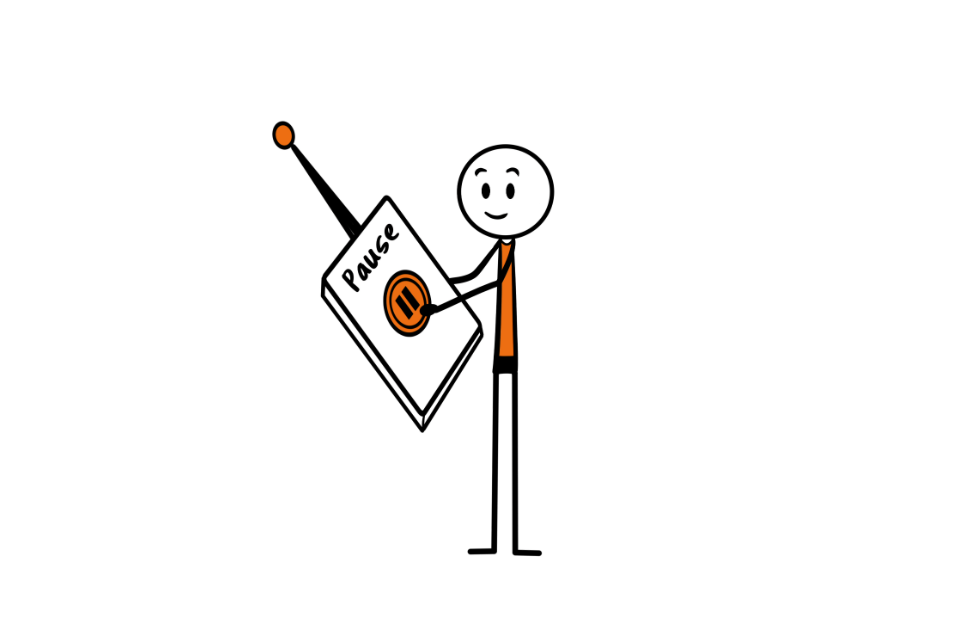“Never miss a good chance to shut up.” (Will Rogers) is a great piece of advice about the importance of the power of the pause.
Most speakers I have ever heard could have improved slightly by understanding how to use a pause effectively.
Knowing how use the the pause effectively will help elevate your next presentation.
A pause can help you to unlock gains when you are presenting – and significantly boost your impact as a speaker.
Before we share our top five tips for using a the pause in your presentation, here are some things to avoid:
Don’t hold the pause for too long – it can look gimmicky, and can feel overdone.
The second mistake is more common – not holding the pause for long enough. Don’t get spooked and start talking after a nanosecond. Hold the pause for a few seconds, otherwise the audience won’t notice.
Now let’s get started with our top five tips for using the power of the pause.
TIP 1. BUILD SUSPENSE
You can build suspense into your presentation by using a pause before you deliver an important point.
By stopping the flow of information, you make your audience curious.
They wonder about what is coming next.
You create an environment where people are more engaged and attentive.
They are ready for your point.
Use this technique when delivering a surprising piece of information, or before the conclusion to a story.
TIP 2. TIME FOR REFLECTION
Giving your audience time to process information by using a pause after you have shared it is a great habit to develop.
When you pause after you have said something you give your audience time to absorb the information.
Allow your audience to reflect on what you have said.
Use this technique when you want people to think about what you have shared.
TIP 3. EMPHASISE VITAL POINTS
Use the a pause before AND after information that is crucial.
This is so important that I am going to repeat the point – use a pause before and after the point.
Use this technique sparingly though.
By using a pause in this way, you emphasise it and maximise the chances of the information landing and sticking.
Use this technique for using the the pause when the information simply HAS to land.
TIP 4. CONFIDENCE FOR QUESTIONS
Using a pause when you are asked a question gives you time to think.
I recently watched an online debate where one of the participants was asked a question that they clearly hadn’t anticipated.
Instead of attempting to answer quickly, they used the power of the pause and stood quietly for about five seconds, and then started to speak.
The result was that the audience knew that what they were hearing wasn’t “bluff” but was considered.
The pause is a good technique when you are asked a question.
A pause helps to ensure that you say the RIGHT thing, not just ANY thing.
Use this technique to show your audience that you are thinking carefully about your response.
TIP 5. ENCOURAGE ANSWERS
When you ask a question, use the power of the pause to give your audience time to answer it.
Using a pause gives people time to think.
Too many speakers fill the silence with noise.
If you say something interesting, they listen to you instead of thinking.
If you say something dull, they get irritated by you instead of thinking.
Your use of the pause shows that you are genuine in your desire to hear from your audience.
Stay quiet!
SUMMARY
Silence really is golden, so consider these points about the power of the pause before your next presentation:
– Pause before making a point.
– Pause after you say something you want to land.
– Pause before and after the most important message.
– Pause to give yourself time to think.
– Pause to give the audience time to think.
As a first step, go and grab your next presentation notes (if you have them ready) or your last presentation notes.
TAKE ONE MINUTE TO FIND ONE PLACE WHERE YOU COULD PAUSE.
If you want a handy sketch note to remind you of the tips in this article please click here.


